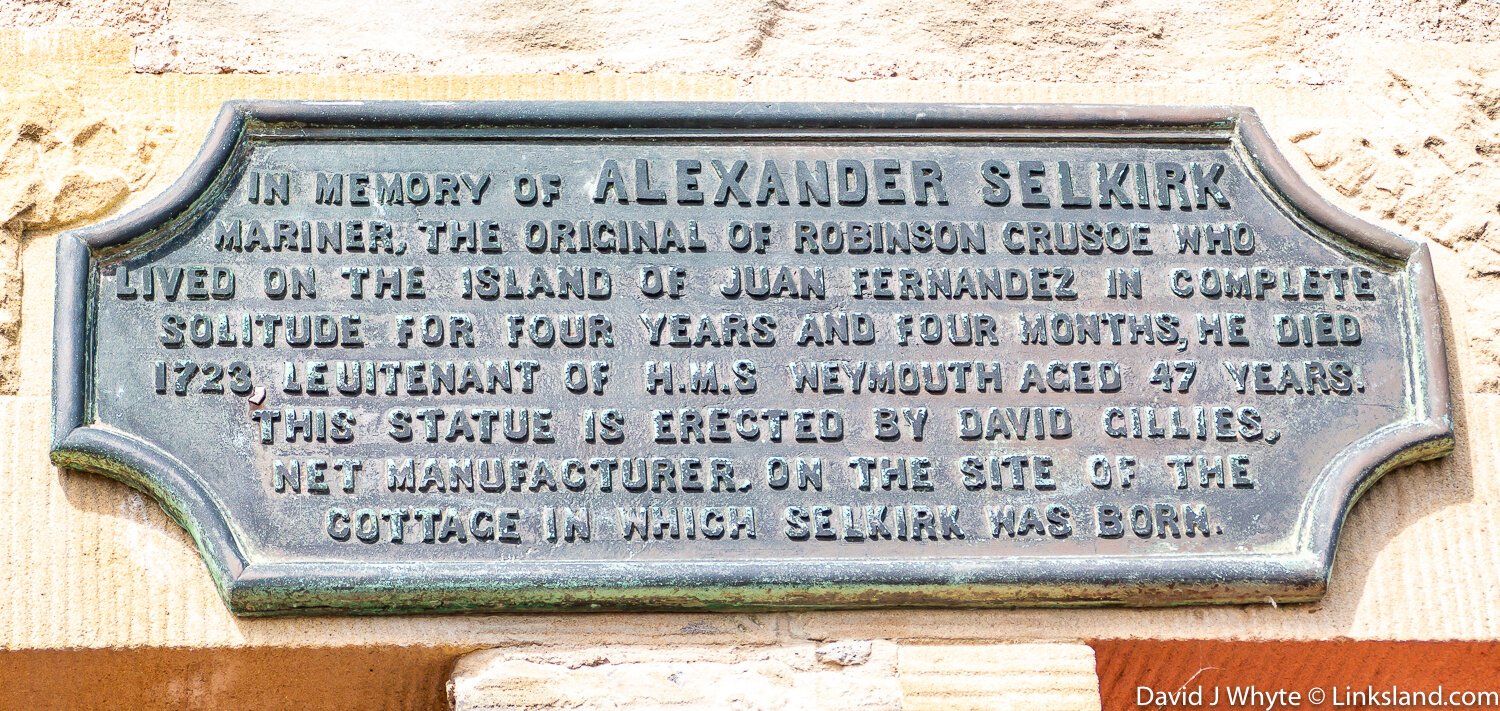Desperately Seeking Crusoe
“You’ve no doubt heard of Robinson Crusoe. But did you realise he came from the Kingdom of Fife? ”
The statue of Andrew Selkirk in Fife’s seaside village of Lower Largo.
Crusoe, of course, was a fictional character. The book Robinson Crusoe was written by Daniel Defoe and was first published on 25 April 1719. It has been translated into almost as many languages as the Bible, and is still in print today!
There’s the circuitous movie version with Tom Hanks playing the protagonist and a basketball called ‘Wilson’ filling in for Man Friday. The ‘Cast Away’ character should have raked through the flotsam for a set of ‘Wilson’ irons & golf balls, then he could’ve fashioned a rudimentary golf course along the beach, kick-starting the golf tourism industry in the South Pacific, and, over the duration, perfecting his bunker technique!
“The enduring story of Robinson Crusoe may have been inspired by a local man to these parts, Andrew Selkirk.”
Cardy House was built in 1871 overlooking the Cardy Net Works which were owned by Selkirk’s descendants. Selkirk was born in a cottage at the bottom of the garden.
Andrew Selkirk was born in the village of Lower Largo in 1676
[3] In his youth, he displayed a quarrelsome and unruly disposition. He was summoned before the Kirk Session in August 1693[4] for his "indecent conduct in church", but he "did not appear, being gone to sea". He was back at Largo in 1701 when he again came to the attention of church authorities for assaulting his brothers.[5]
How did he end up abandoned on a desert island for four years and four months? The story goes that Selkirk was such a pain in the proverbial, his captain and shipmates left him on the beach on a Pacific island called "Más a Tierra", now part of Chile with only his sea chest, a pound of gunpowder, his musket and some basic cooking utensils.
Selkirk had been a feisty Fifer, the youngest of 7 boys and unruly from the get-go. At the age of 15, he ran away to sea, eventually becoming a navigator on a ship called ‘Cinque Ports’, captained by one Thomas Stradling. Selkirk and the captain were at constant odds, Selkirk insisting the ship was unseaworthy, riddled with shipworms that were eating away the hull.
As it turned out, the quarrelsome navigator's suspicions about the state of the Cinque Ports hull were right! The ship foundered 400 km from the coast of what is now Colombia.
That, in a nutshell, is Selkirk’s tale. The author, Daniel Defoe, heard the story 10 years later and penned what many considered to be the very first English novel.
But there is a twist to the tale and I wonder if this is why the local tourist authority doesn’t make more of it. Some say Selkirk hijacked the story and said it was himself that Defoe had written about when in fact there were, according to more scholarly studies, a number of tales that Defoe had drawn from.
I did not raise this with Mrs Jardine at the time as she was so involved in promoting the village and the idea that her relative had indeed inspired the book. She invited me to her home for a cup of tea and what a place that was; a Victorian preserve. She explained she was offering it to the National Trust for Scotland to take over but wasn’t making any headway. I’ve since noticed that it’s been turned into private flats overlooking the rope works that once were owned by the family.
SELKIRK’S RELATIVES
A few years ago, I was visiting the Fife village of Lower Largo and bumped into a relative of Andrew Selkirk, Ivy Jardin. At the time, she was running a tiny museum dedicated to her late husband’s direct descendant. She was closing up for the day and invited me home for tea!
The house was a Victorian time capsule, ornately decorated inside and out and retaining its original Victorian décor and furnishings. Ivy told me she was trying to get Historic Scotland to take over the entire building.
She also told me that she and her son had visited the Chilean island of Más a Tierra now called ‘Robinson Crusoe Island’ by the Chilean government.
Today’s village of Lower Largo has been enhanced with some interesting garden decorations.
The village of Lower Largo.
comes in is a little more problematic. Either he heard of Selkirk’s and based the character Robinson Crusoe or quite possibly Selkirk heard the book and insisted it was based on his exploits.
The village is well worth a wander, not only for the Crusoe connection but the wonderful decorations the locals have concocted.







